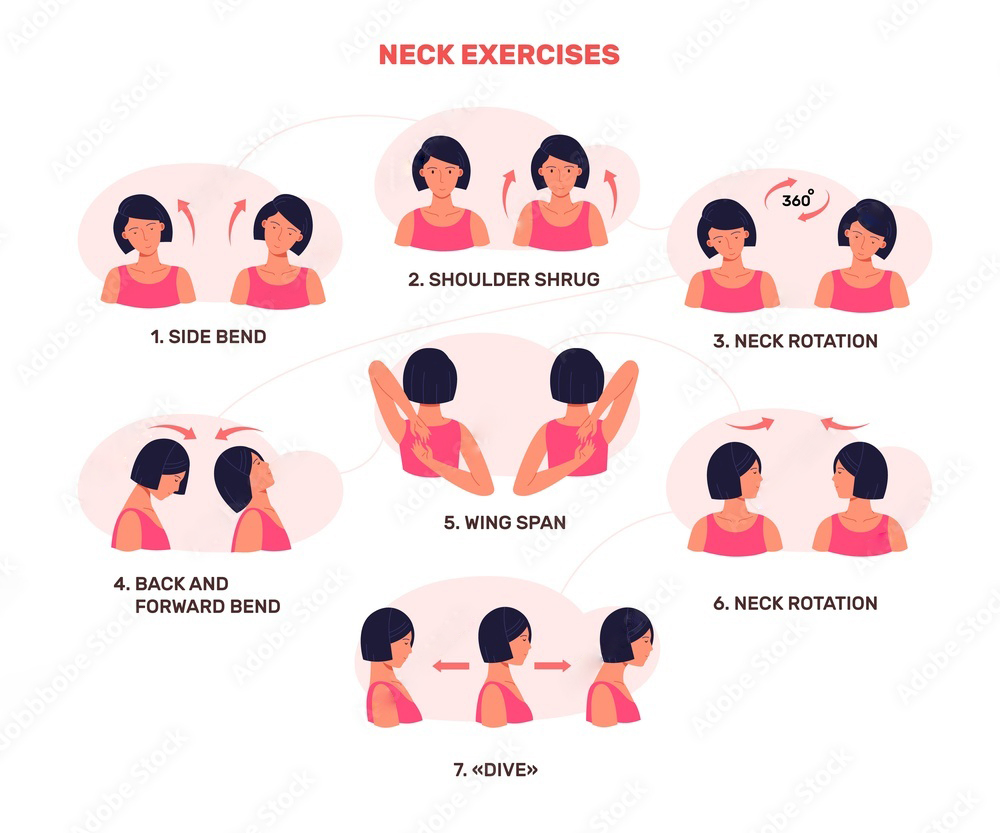
Exercise as a Vital Tool for Post-Cancer Physical Rehabilitation
- 27 December, 2024
- By Noa

The long way to healing for most cancer survivors is full of uncertainties and struggles. Sounds great during and after treatment, but cancer treatments like chemotherapy, radiation, and surgery take their toll on a person’s physical condition, leaving them weak and exhausted. Among all the life-saving treatments, one factor stands out as most beneficial for cancer recovery: exercise. This amazing tool helps in building strength again, reducing fatigue and generally improving one’s mental well-being.
At Niramaya Oncology Associates (NOA), we believe not only in treatment but also in holistic care that encompasses every aspect of the well-being of a patient. Though cutting-edge diagnostic tools and advanced treatments are used to fight cancer here, we recognize that rehabilitation, especially through exercise, will have a very profound impact on any survivor’s journey to recovery. In this blog, though, we delve a bit deeper into exercise for rehabilitation after cancer and how it would have become one of those life-changing components within the recovery process.
Key Benefits of Exercise in Post-Cancer Rehabilitation
-
Rebuilding physical strength and endurance
The first word that comes to your mind when you say “recovery” after the treatment of cancer is rest. However, rest alone isn’t sufficient after the body has endured high-intensity physical stress from the interventions. Survivors will mostly complain about their generalized physical weakness, low energy levels, and endurance. Chemotherapy and surgical procedures lead to muscle wasting, fatigue, and a general inability to perform, whereby even an activity as simple as climbing stairs or taking a walk over long distances seems impossible.
Restoring strength and endurance is a primary role of exercise. Endurance gets rebuilt and muscles regained are converted using regular physical activities and especially strength training even in the life of survivors. Survivors eventually go back to normal life by lifting light weights or using resistance bands, even walking on a treadmill, depending on what suits them best, and then slowly increase their strength as they rebuild their bodies. Exercise, the beauty of it all, is much more effective in giving back survivors their strength and more control of an empowered feeling as they take back the physical function lost through treatment.
-
Cancer-Related Fatigue Relief
Cancer-related fatigue, which has been the most common as well as the most misunderstood, has to do with the chronic tiredness related to cancer treatment. Fatigue as a result of cancer treatment does not seem to go away even with a good night’s rest, unlike tiredness after a long day. Thus, this impacts the everyday lives of some survivors greatly by causing exhaustion within them that sometimes prohibits most of them from enjoying life.
Interestingly, exercise is one of the most effective treatments for cancer-related fatigue. It may seem counterproductive, but getting up and moving even a little has a much more pronounced calming effect on energy levels. Exercise improves blood circulation and oxygen distribution, as well as the release of pleasurable hormones (i.e., endorphins), which reduce tiredness. Cancer survivors adopting exercise into their daily routines would enjoy the added benefit of boosting energy levels, improving sleep, and alleviating fatigue. It’s a positive feedback loop: more energy leads to more movement, which then leads to even more energy.
-
Augmenting Mental and Emotional Health
Though cancer is usually considered to have a physical impact, its emotional aspect weighs as much. Survivors feel anxiety, depression, and loneliness after finishing their treatment. Cancer scars not just the body but also the mind. But that is not the only part of bad news: the exercise helps.
Exercise has scientifically been proven to improve mental health with the addition of neurotransmitter production-increased serotonin and dopamine. These chemicals send signals that have a positive mood, reduce stress, and in addition manage anxiety. For cancer survivors, exercise is not only for the body; it is a mental and emotional lifeline. Hence, whether it is a walk in the park, gentle yoga practice, or maybe an intense workout, activity helps clear the mind, elevates the feeling of depression, and raises spirits.
Moreover, exercise improves self-esteem. Survivors gain physical strength and begin to feel good about their bodies, subsequently affecting their self-image and confidence. For most, one of the worst aspects of recovery is the emotional toll exacted by cancer, and exercise gives a way to regain some control and empowerment.
-
Reducing the Risk of Cancer Recurrence
Being diagnosed with cancer often means living with the fear of recurrence. Many cancer survivors grapple with one remaining question: “What can I do to lower the chance of my cancer returning?”
It is clear from the research that regular physical exercise goes a long way toward improving the chances of reducing cancer recurrence risk. Research also indicates that physical activity assists in balancing hormone levels to enhance immunity and decrease inflammation all significant parameters in reducing the risk of cancer return. Exercise has shown that it has lower recurrence rates in breast, colon, and prostate cancers. It is empowering for survivors to know that by being active, they are not just nurturing their bodies but also actively decreasing the risk of cancer recurrence.
-
Enhancing Quality of Life
Arguably, exercise is the most important thing in cancer rehabilitation: it improves the general quality of one’s life. Cancer survivors often feel cut off from the life they used to live after treatment. They might feel tired, disorientated, or physically limited when it comes to performing daily chores. Exercise fills that gap.
Exercise helps cancer survivors reclaim their independence: it builds physical strength, increases energy levels, and improves mental health. Exercise empowers survivors when it comes to having similar pleasures in life, such as being able to cook, take a walk with loved ones, or get out of bed free of feeling drained. They can also improve social interactions because most of the time, survivors feel they are better than others when they interact with other people in social events and have more meaningful relationships.
Exercise Categories for Post-Cancer Recovery
Rather, cancer exercise is personalized for every person, since the pretreatment or even post-cancer exercise comes to each individual’s specific needs, place, criteria, and capacities. However, research has shown that some categories of exercises have been effective in improving the status of cancer survivors.
-
Aerobic Exercise
Aerobic forms of exercise that include walking, cycling, or swimming have been found beneficial since they improve cardiovascular activities and increase energy levels and endurance. Most cancer survivors prefer such forms of aerobics because they are gentle on their joints and can thus be optimally used at individual levels of fitness. These simple types of activities can be starting points: walking around the block or light swimming, and after being strengthened, one can gradually increase the intensity and duration.
-
Strength Training
Strength training is a must, as well as rebuilding muscle mass and shaping physical strength after cancer treatment. Simple exercises targeted at muscle function recovery, such as squats, lunges, and bicep curls, played using light weights or resistance bands, can be beneficial for the survivors. Returning to daily living is achieved by strength training, which also protects against osteoporosis, among other conditions that are caused by some treatment regimens for cancer. Starting slowly and then gradually progressing is advisable, as this prevents the risk of injuries.
-
Exercises to improve flexibility and balance
Strength is only one aspect of post-cancer recovery: flexibility, balance, and mobility all need improving. Yoga, Pilates, and tai chi provide wonderful avenues for improving flexibility and balance while also dealing with stress. Range of motion exercises reduce stiffness in the body and prevent falls, which is especially important for older survivors or those whose musculature has weakened.
-
Practical Exercises
Functional exercises are movements that imitate lifting, bending, and reaching. They are meant to develop practical strength so that survivors can do typical activities such as getting in and out of chairs, hefting groceries, or lifting objects. They help to regain confidence in undertaking the requisite independence through activities of daily living.
The Safety Guidelines for Exercise Initiation in Cancer Survivors
Even though exercise has many benefits, care must be taken by cancer survivors when beginning an exercise regimen. Present the safety guidelines below:
-
Get a Healthcare Provider’s Opinion
The exercise regimen must be discussed with a doctor or rehabilitation professional before initiating participation in any exercise program. The two assess the cancer survivor’s overall health, pinpoint any limitations, and offer a personalized exercise regimen that suits their needs. Exercise might not interfere with ongoing treatments or aggravate side effects.
-
Start Slowly and Build Up Speed Gradually
A cancer survivor should start slowly after a long period without activity. They should begin with low-intensity exercises such as walking, stretching, or gentle yoga. As time goes by, increase the intensity and duration, but be careful not to push yourself too quickly.
-
Hydrate: With Rest When Needed
Water is vital during an exercise regimen because cancer treatments leave one more vulnerable to the effects of dehydration. Drink plenty of water before, during, and following an exercise session. Furthermore, without resting, it’s not possible for the body to repair itself. Don’t go overboard, give your body enough time to get rest and recuperation between workouts.
-
Pain and Discomfort Register
In exercise, no pain should be evident. Stop if you have any pain, dizziness, or other unusual symptoms during or after exercise, and talk to a health professional. It should be a difficult yet not painful exercise.
Conclusion
Exercise is a means to a physical end; however, it forms one of the strong pillars supporting post-cancer rehabilitation that helps survivors recover strength, reduce fatigue, and live positively both mentally and emotionally. Aerobics, strength training exercises, and activities that enhance balance and flexibility all qualify as physical activities that would be very critical in the journey toward healing and recovery.
From Niramaya, we have our clinic devoted to making our patients regain life after treating cancer. We believe by introducing exercise in their recovery plan, cancer survivors would rediscover strength, empowerment, and overall improvement in quality of life. Exercise, along with medical care, love, and support, opens a brighter and healthier future for cancer survivors.
